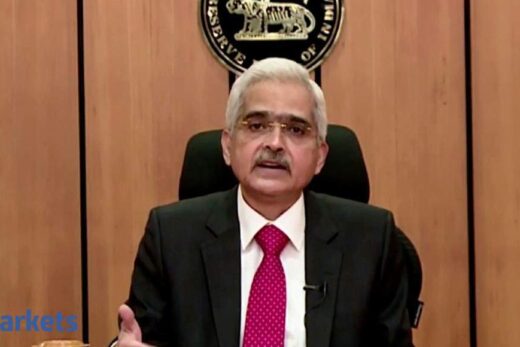After great returns from January to October, are we headed towards a lean patch of the market when it is unlikely to generate a lot of upside?
I would broadly agree with you but I do not think that there is a deep correction ahead. There is a period of extended volatility and in volatile times, absolute returns would not be as great as they were in the past. I would still argue that equities as an asset class would be the best asset class to invest in, relative to what is there in the market, but from the lens that you have put in terms of the January to October timeframe, is that going to get repeated in the next eight months? I doubt it, because liquidity will lessen with tapering on board; the interest rate cycle will tend to rise with better news on the US economy. The 2023 rate hikes probably would come a bit ahead and that is what the bond markets are telling us. But the Fed is still not accepting that. But given the uncertainty around that, I would agree that it is not the time to expect strong double digit kind of returns. Between medium to single digit is what we would likely get in the next few months.
So, in the next few months, the returns would be there. It is not that we are reaching a patch of no return or negative returns.
While tapering has been the biggest concern for the market, a bigger concern for our market is faster than expected US recovery as that is when the interest rate hikes come into picture. Given that there is good news for the Indian economy in the US coming back faster to growth path, I expect the market action and the economic related action to balance out each other.
I do not see a prolonged period of correction happening because there is enough domestic liquidity across direct equities from new-age investors, across mutual funds buying and insurance companies and others. The difference between a 2007-2008 kind of a correction when tapering happened or 2013 is that there is strong domestic support from both the liquidity aspect as well as from the economic news footprint.
As we get used to the single digit returns, where should one look for it?
I think that safety is no longer safe. Why I say that is because of what liquidity has done and especially in the FMCG sector, the safety aspect of the predictability of earnings meant that their valuations, liquidity have always surged for this safety factor and the stocks have run up. It is these stocks which are at high valuations and hence if they do not deliver on the kind of expected growth that is being factored in, one can see corrections there.
I would say that just blindingly saying FMCG, healthcare are safe sectors is hazardous. So what is safe? What is safe is where the market has still not fully discounted future recovery which is where the cyclicals come into play. Now there are domestic cyclicals like capital goods, infrastructure, cement, building materials and also consumer discretionary stocks in a broad manner where I will also include consumer durables, auto and housing. That is a relatively safe area despite the cyclicality because that is where I expect earnings revisions to happen. The valuations are still not fully reflective of their potential which is normal in a cyclical.
Similarly global cyclicals, where metals form a play, as do some amount of commodities and oil, that feed into industrials. These are also helped by the $1 trillion infrastructure bill being passed in the US and the return of US recovery on the demand side. We would again see global cyclicals play. So I would say global and the domestic cyclicals represent a safer element, but one has to give time for it to play out. I would say this is a very hazardous time to invest with a 6 or 12 month view. If one has that kind of a view, one should stick to what is called the hybrid category of mutual funds like dynamic asset allocation, equity hybrids where they blend in to soften the blows of volatility and at the same time one gets equity taxation. One can switch back into equities when one feels the time is right. They are ideal because even in the short-term, capital gains tax is only 15%.
So to summarise, I feel that the growth of the Indian economy is where safety lies because there is the demographic dividend, the PLI scheme the government is putting in, the government related infrastructure push which with the coming Budget, would get a boost because the government would make a lot of announcements around that space. I see that as a safety element, provided we have a medium term perspective on the market.
Where would banks feature if you talk about cyclicals?
For me, financials represent three different facts. The corporate oriented banks and the retail oriented banks and NBFCs. Within the NBFCs, I would separate the housing finance companies as a separate pack as opposed to normal consumer based lending.
In these three packs, the banks are grabbing the advantage of soft interest rates because they have a direct window to RBI. The second aspect is the reach. Whether it is a private sector or public sector bank, no NBFC can match the reach of the banks. I would expect banks to be ahead of the curve compared to financials.
Financials are smart, quick to turnaround on loans, quick decision making and that is where their USP comes in and in the non-bank financial space, it is the capital adequacy and the brand and how easily they can raise reasonably cheap capital and stick it out there that comes in.
The third is the housing finance companies. The demand for housing loans will grow so that the top line will be there but there is competition within housing finance companies to cut rates. Banks are now quoting at 6.5%, I do not think NBFCs and the housing finance can afford to match that kind of rate, So they have defined spaces where their margins can be protected. Housing finance is an interesting space where the overall volume will grow, top line will grow tremendously but if you come to cost of margins, in case of long term loans, one cannot raise 12 to 15 year money cheaply today. So they are going to borrow at cheaper rates and hope to roll it over but over a period of time, the market will also be aware that their margins are going to shrink because interest rates are going to rise. That is the key.
Financials is not one blind call. It is a company specific call one needs to take based on all of these factors that I pointed out.



